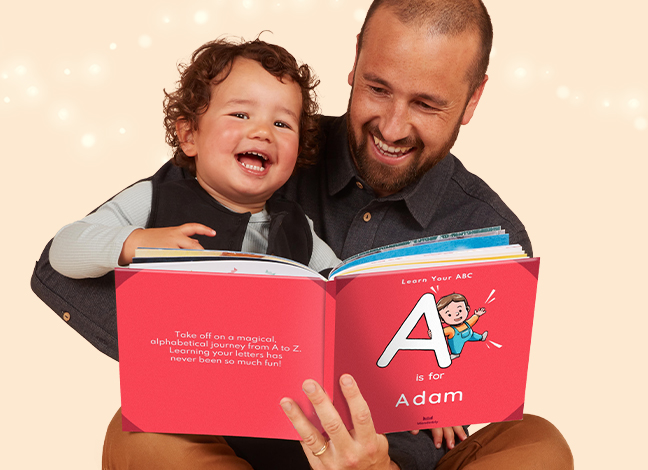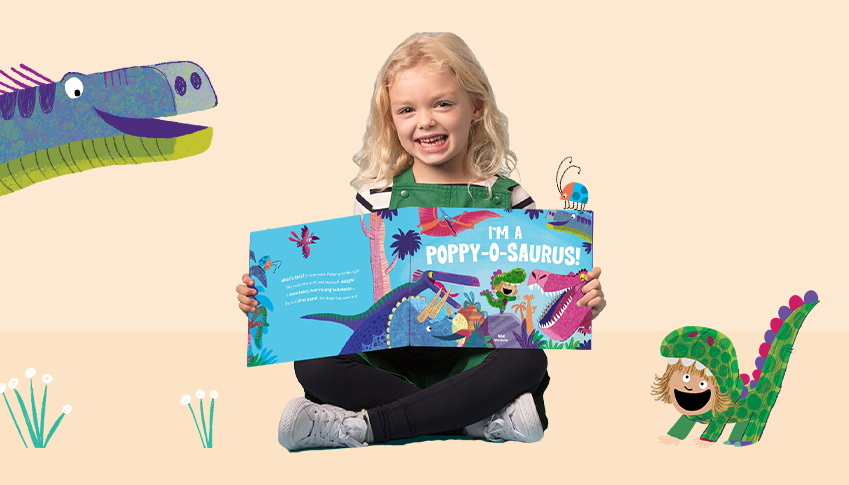Reading is one of the most important skills that we learn in life. It guides us, expands our minds, challenges our imaginations and conjures magic in the mundane. That’s why, learning to read for kids is kind of a big deal, and as parents or grown-ups keen to give the children in your life the best possible start, it’s something that you can absolutely get involved with.
Figuring out how to learn to read for kids isn’t something that is picked up like speech, it truly is a code to be cracked. But cracked it can be. Given that we’re more than a little loopy about books, we’ve put oodles of thought into how to make reading fun for kids. Ready to know all our secrets?
The right age to read
When should I begin learning to read with my child? Well, from day dot if you like! Reading to a child before they can even speak is a lovely, soothing activity, not to mention incredibly bonding. Once they’re able to start asking questions, then comes the really fun stuff. Why not add a personalized element to your journey with ‘ABC for You’ by David Cadji-Newby and Andrew Weale?
Listen and learn
Phonics: you may well have heard this word a few times if you’re around any children of school age, and for good reason. This is the key to cracking the ‘code’ of reading and writing, as it breaks down all of the sounds of a word and relates each one to a letter, before putting it all back together again. It’s recommended that children start with letter sounds – like the alphabet – before moving on to short vowels such as ‘aaa’ for sat, cat, mat and so on. Once those have been grasped, you can move on to consonant digraphs (sounds way fancier than it is), which is simply putting two letters together to make one sound, like ‘sh’ and ‘th’. This methodical step-by-step building approach may seem like lots of work, but you’re literally building a new neural network!
Say it, see it
What are high frequency words? Quite simply, the ones we see and use the most often. If you were thinking of reading as a house, these would be the foundations on which all the fun stuff is built. On their own, words such as ‘and’, ‘it’, ‘as’ and ‘the’ aren’t super exciting, but the more we show children how they link everything together, they’ll form a skill like riding a bike that won’t be forgotten. Try emphasising these words when reading and make eye contact with the child to show that this little word is just as important as the ‘humongous dinosaur’ that comes after it.

Do it together
While there may be nothing better as a grown-up than whisking yourself off into another world with a spot of solo reading, to make reading fun for little ones it should absolutely be a group activity to begin with. Make it an event! Build a den! Invite special guests (cough, cough, grandparents). Here are some great examples of fun ways to get the whole gang involved.
Get curious
Now is the time to embrace a child’s ability to ask questions about everything. And you should do it, too! When reading a story together, pick out details such as the color of a character’s hat, and ask them what it is. Get them to question and contextualise the words, so that they understand that they have meaning. Once they grasp the ‘whys’, then the words will begin to have a place in their mind for them to revisit when needed.
Get down to the beat
Apart from being an awful lot of fun, singing helps with everything. Yes, even reading. The theory is: the left side of the brain is in charge of the verbal skills, and the right side is called upon for emotional, artistic and physical needs. So, by singing things – from the alphabet to your favorite nursery rhyme – you’re using lots of bits of your brain all at once, which is said to be more effective for retaining knowledge. See, there’s a reason adverts, jingles and song lyrics stay in your head forever!
Order, order
How do sorting games help form sentences? Well, quite simply, they reinforce sequences and an order of events, and that’s what sentences are. We teach that in English, we read from top to bottom, left to right. That we start with a capital letter and end with a full stop. Fundamentally, that there is a beginning, middle and an end. Once they grasp these skills they can apply them both to words and then sentences and finally stories.

Surround yourself with words
The more print children see the more they’ll pick up. Sounds simple, doesn’t it? From the newspaper left out on the kitchen table, to signs of shops, on the road, logos… encourage children to try and figure out what things say. Getting into a lift? Ask them to find the letter G for ground and press it. Linking up actions in their daily life with the symbols that represent them is…wait for it…reading!
Chill out
Above all, don’t get frustrated, reading is a tough code to crack, so don’t expect it to be instant. All children make their way along their own paths in life, so avoid the comparison with their peers, or what you could or couldn’t do at a certain age. This is a unique journey for a unique child, and they’ll get there in their own way. Focus instead on the joy of discovery and shared experiences.
Make a game of it
Eye Spy, bath alphabet letters and jazzy crayons can all make reading and writing that much more appealing. Gone are the days of tedious repetition and lines on a chalkboard. Pay attention to what your child enjoys and have fun with letters everywhere – and yes, fiddling with your alphabetti spaghetti counts.
Role model
Make a show of writing lists, birthday cards, notes and encourage them to copy you, even if it’s made-up words, it’s still excellent practice. Game of shops, anyone?
Ready to dive in and start reading? Lots of our personalized books feature the child’s name not only in the story but also hidden in the illustrations – the perfect way to help them learn letters and recognise words.
